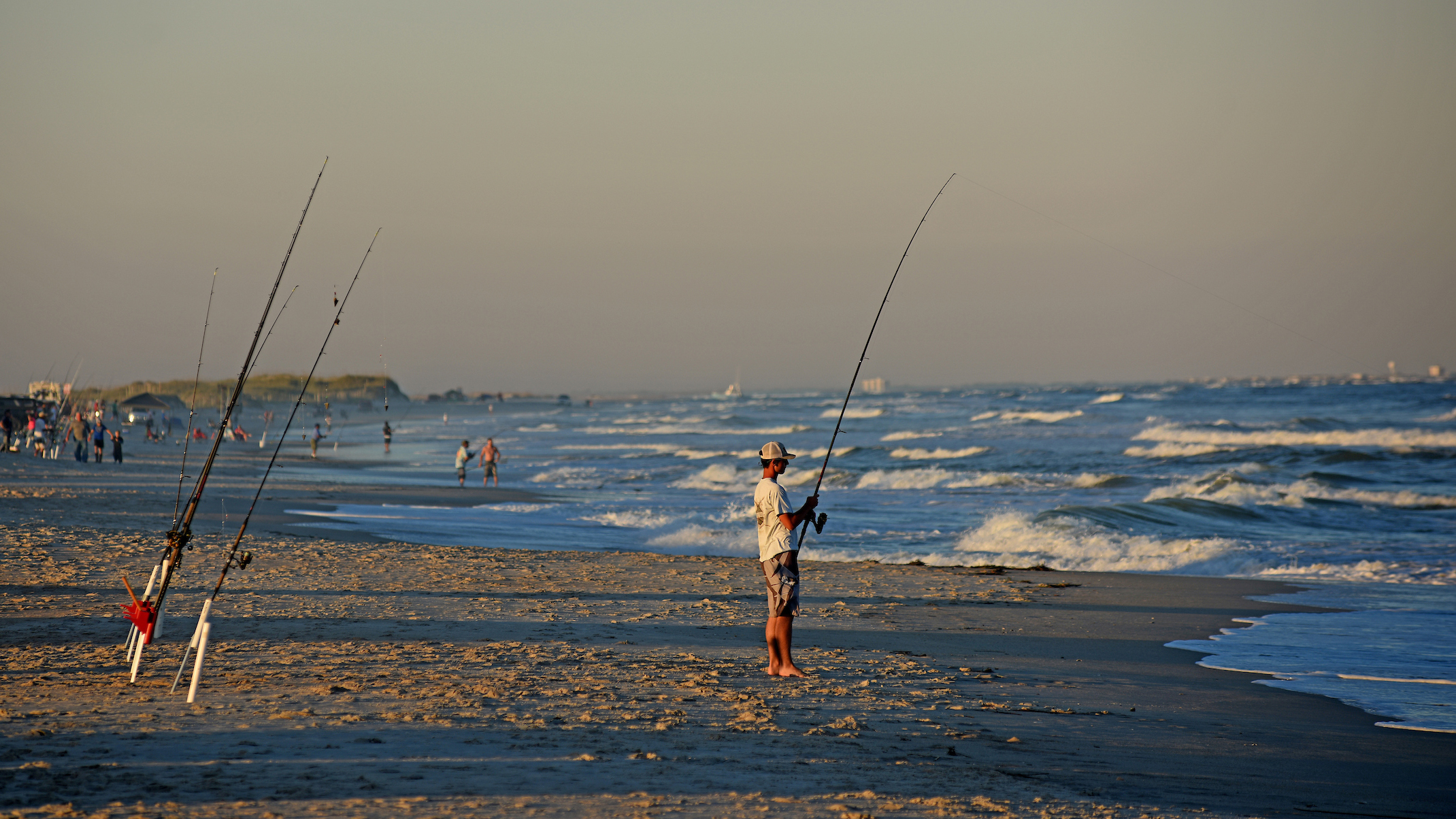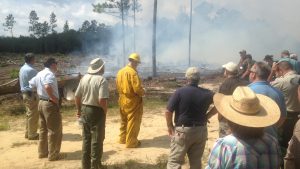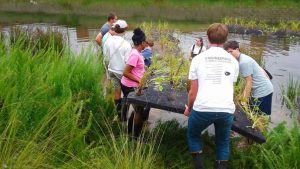Ensuring Cleaner Air and Water

For many people, summertime means outdoor time enjoying beaches, lakes, mountains and parks. Whether you’re swimming, hiking, fishing or just drinking water, researchers from across NC State are working with everyone from government agencies to high school students to make your air and water cleaner and safer. Learn about just a few of these projects.
Something in the Water
Since the industrial chemical GenX was detected in Wilmington’s water supply last year, local residents, public officials and many others have wondered and worried what effect it could have on those who were exposed to it. Jane Hoppin is taking action to find out.
Hoppin, associate professor of biological sciences, member of the Environmental Health Science faculty cluster and deputy director of NC State’s Center for Human Health and the Environment (CHHE), is conducting a study to understand how Wilmington residents have been exposed to GenX.

GenX is a fluorinated chemical used to make polymers, such as the nonstick coating Teflon. While studying the Cape Fear River watershed five years ago, a team led by Detlef Knappe, an NC State professor of civil, construction and environmental engineering, found high concentrations of the chemical in the drinking water supply, originating from a manufacturing plant upstream from Wilmington owned by The Chemours Company.
In 2016, Knappe’s team published a paper estimating around 200,000 people in the Wilmington area had been exposed to “high concentrations” of GenX and related compounds. But it wasn’t until summer 2017 that concern began to grow among residents and public officials.
That fall, Hoppin quickly got initial approval for a grant from the National Institute for Environmental Health Sciences for her study. Her team began recruiting 340 volunteers served by the public utility and sampling their tap water, blood and urine.
“We want to answer three key questions,” Hoppin said. “Is GenX in me? What predicts GenX in me? And are there health consequences from GenX?”
Her team released results from the water study in April and is now analyzing the blood and urine samples to see how much of the chemical is in subjects’ bodies — and what those levels might tell us.
One of the key elements of the study is keeping the community informed about what they find. To that end, they are holding community meetings to share study results, answering questions from worried residents and partnering with organizations familiar with the community’s needs and concerns.
“Building trust is a key part of our work,” Hoppin said. “If we’re not telling them what we’re doing, then we’re not really responding to their concerns.”
Where There’s Smoke
Jennifer Fawcett, an extension associate with N.C. Cooperative Extension and the College of Natural Resources, is working with federal agencies like the Environmental Protection Agency (EPA) to reduce the air pollution that results from smoke.
Along with the Coalition of Prescribed Fire Councils and the Southeast Regional Partnership for Planning and Sustainability, they have developed a pocket guide to smoke management that helps private landowners and others understand best practices for managing the smoke that results from prescribed burns, including predicting smoke movement and avoiding smoke-sensitive areas.

One of Fawcett’s goals is to help the public understand that prescribed burns can have benefits for the ecosystem, including improving wildlife habitats, increasing biodiversity and enriching the soil. They can also help prevent future wildfires that can cause much more damage, in terms of both destruction and air pollution.
“We want to help people understand that burns aren’t always bad,” Fawcett said. “Sometimes a little bit of smoke now prevents a lot of smoke later.”
She has also worked with the EPA and air quality officials and fire chiefs from eight southern states to organize regular smoke summits to discuss issues around smoke management and air quality.
“This is the only meeting of its type in the country,” Fawcett said. “We’re excited to be leading the way in having some real discussions about these important issues.”
Restraining Runoff
Stormwater runoff is a leading cause of water pollution because storm drains feed untreated runoff water into bodies of water. This can affect the ecosystems of ponds, rivers and even oceans — as well as the health of people who enjoy them.
Faculty and students in the Department of Biological and Agricultural Engineering (BAE), shared by the College of Agriculture and Life Sciences and College of Engineering, are working on a range of projects to improve the environmental effects of stormwater.
BAE Ph.D. student Bryan Maxwell and recent BAE graduate Dani Winter have been using an on-campus research site to evaluate whether floating islands of plants can improve stormwater quality. With grants from the Water Resources Research Institute at NC State and the NC State Sustainability Fund, Maxwell and Winter designed, built and installed the floating islands in two campus stormwater ponds in 2017.

The team, which includes several undergraduate researchers, is testing how well the roots of plants growing on the islands help filter water in the ponds. They measure levels of nitrogen, phosphorus and suspended solids, which are small particles that contribute to lower water quality. Cutting-edge water quality sensors provide continuous data from water entering and exiting the pond.
The islands have garnered a lot of attention, attracting passersby on campus and even visits from high school summer camps to help with planting on the islands. “This project has been a great way to start conversations around sustainability and the environment,” Maxwell said.
In another project, Michael Burchell, associate professor and department extension leader in BAE, has been working with the coastal town of Kure Beach for the last decade on a solution to the problem of stormwater pollution in the Atlantic Ocean. If too much bacteria from untreated stormwater seeps into the ocean, it can lead to swimming advisories and even beach closures, which are costly for a town dependent on tourism.
Burchell’s solution: installing low-cost filtration systems that are concealed beneath sand dunes along the beach. These filters have reduced overall stormwater flow into the ocean and nearly eliminated bacteria in the water that does flow through. The town currently has three dune systems and last year received a grant to study the feasibility of installing additional systems in another part of the beach.
The project also aims to educate local citizens about the relationship between coastal stormwater runoff and bacterial contamination. And hundreds of students in NC State Engineering Summer Camps have gotten hands-on experience participating in field activities at the site, including measuring groundwater elevations and planting sea oats on the dunes.
“There is no silver bullet for handling stormwater runoff,” Burchell said. “But this system presents a low-cost, low-tech option.”
- Categories:


